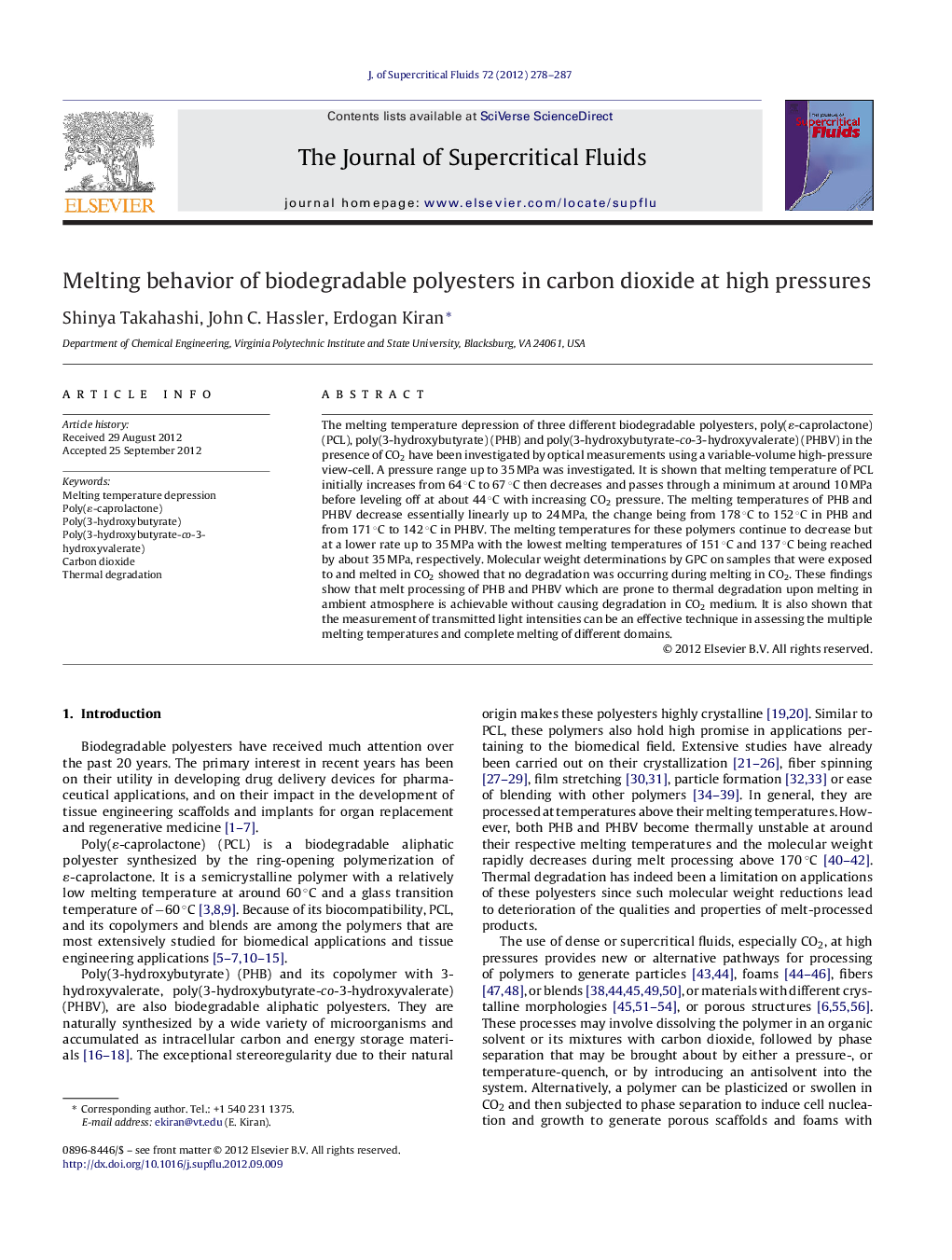| Article ID | Journal | Published Year | Pages | File Type |
|---|---|---|---|---|
| 230975 | The Journal of Supercritical Fluids | 2012 | 10 Pages |
The melting temperature depression of three different biodegradable polyesters, poly(ɛ-caprolactone) (PCL), poly(3-hydroxybutyrate) (PHB) and poly(3-hydroxybutyrate-co-3-hydroxyvalerate) (PHBV) in the presence of CO2 have been investigated by optical measurements using a variable-volume high-pressure view-cell. A pressure range up to 35 MPa was investigated. It is shown that melting temperature of PCL initially increases from 64 °C to 67 °C then decreases and passes through a minimum at around 10 MPa before leveling off at about 44 °C with increasing CO2 pressure. The melting temperatures of PHB and PHBV decrease essentially linearly up to 24 MPa, the change being from 178 °C to 152 °C in PHB and from 171 °C to 142 °C in PHBV. The melting temperatures for these polymers continue to decrease but at a lower rate up to 35 MPa with the lowest melting temperatures of 151 °C and 137 °C being reached by about 35 MPa, respectively. Molecular weight determinations by GPC on samples that were exposed to and melted in CO2 showed that no degradation was occurring during melting in CO2. These findings show that melt processing of PHB and PHBV which are prone to thermal degradation upon melting in ambient atmosphere is achievable without causing degradation in CO2 medium. It is also shown that the measurement of transmitted light intensities can be an effective technique in assessing the multiple melting temperatures and complete melting of different domains.
Graphical abstractFigure optionsDownload full-size imageDownload as PowerPoint slideHighlights► Melting point of poly(ɛ-caprolactone), poly(3-hydroxy butyrate) and poly(3-hydroxy butyrate-co-3-hydroxyvalerate) in CO2. ► Melt processability of PHB and PHBV in carbon dioxide without degradation. ► Transmitted light intensity as a probe of the melting process and lamellar thickening in CO2. ► Use of transmitted light intensity to assess conditions for complete melting.
